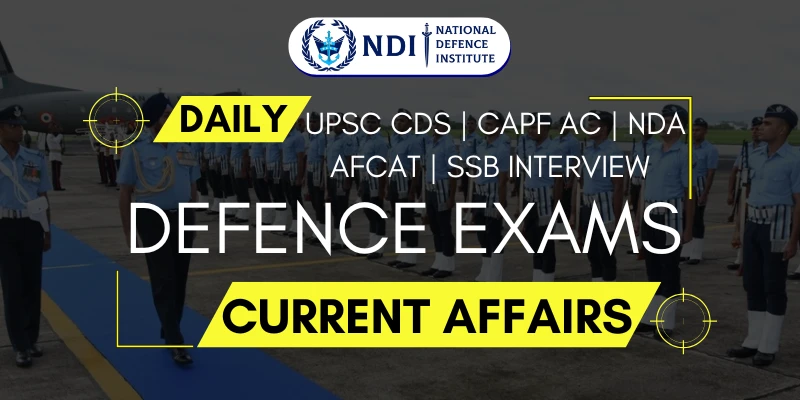1. Tanzania’s Hottest Year on Record
In 2024, Tanzania experienced its highest average annual temperature, reaching 24.3°C—0.7°C above the long-term norm.
Quick Facts about Tanzania
-
Capital: Dodoma
-
Location: East Africa, just below the Equator
-
Neighboring Countries: Kenya and Uganda (North); Rwanda, Burundi, and the Democratic Republic of the Congo (West); Zambia, Malawi, and Mozambique (South)
-
Water Bodies: Lake Victoria (North), Lake Tanganyika (West), Lake Nyasa (Southwest), Indian Ocean (East)
-
Climate: Tropical, featuring a prolonged dry season and two rainy seasons
-
Notable Lakes: Lake Tanganyika – the second deepest lake in the world
-
Highest Peak: Mount Kilimanjaro – Africa’s tallest mountain and a dormant volcano
-
Major Rivers: Ruvuma and Rufiji
2. WAVES 2025 – Anti-Piracy Challenge
A prominent initiative under the "Create in India" campaign, WAVES 2025 spotlights innovation in digital content protection.
In the News
The Anti-Piracy Challenge, a flagship part of the Create in India initiative, will be featured at WAVES 2025 (World Audio Visual and Entertainment Summit), taking place from May 1–4, 2025, in Mumbai. Organized by the Ministry of Information and Broadcasting, the challenge promotes advanced solutions like watermarking and fingerprinting to combat digital piracy in India.
About WAVES 2025
-
A global summit spearheaded by the Government of India
-
Seeks to establish India as a media and content innovation hub
-
Sectors Included: Broadcasting, Film, TV, Radio, Animation, Gaming, Comics, Advertising
-
Emerging Tech: Generative AI, AR/VR/XR, and digital media platforms
-
Supports India’s $30 billion creative economy, which employs around 8% of the workforce
-
Contributes to the Media & Entertainment sector’s growth, projected to hit $44.2 billion by 2028 – currently 5th largest globally
3. Meghayan-25: Indian Navy’s Meteorological Symposium
The Indian Navy hosted the 3rd edition of its meteorological and oceanographic symposium, Meghayan-25.
Theme and Objective
Held in conjunction with World Meteorological Day 2025 (March 23), Meghayan-25 adopted the WMO theme “Closing the Early Warning Gap Together”, emphasizing enhanced early warning systems for climate and disaster response.
Key Launches During the Event
-
MOSDAC-IN Web Services: A collaborative launch by the Directorate of Naval Oceanology and Meteorology (DNOM) and ISRO’s Space Applications Centre (SAC), offering secure, satellite-based weather products to naval offices.
-
Sagarmanthan Journal: Relaunch of the Navy’s professional publication, now in its 10th edition after a 10-year pause.
About the World Meteorological Organization (WMO)
-
A UN specialized agency focused on meteorology, hydrology, and climate sciences
-
Originated from the International Meteorological Organization (1873), formally established as WMO in 1950
-
Headquarters: Geneva, Switzerland
-
Includes 193 member nations and territories
4. Exercise DUSTLIK-VI: India-Uzbekistan Military Drill
The sixth edition of the bilateral military exercise DUSTLIK-VI between India and Uzbekistan began on April 16, 2025, at the Foreign Training Node in Aundh, Pune.
Overview
This annual joint military exercise alternates between India and Uzbekistan, with the previous (5th) edition held in Termez, Uzbekistan, in April 2024. The inaugural edition took place in November 2019.
Participating Forces
-
India: 60 personnel from a JAT Regiment battalion and the Indian Air Force
-
Uzbekistan: Troops from the Uzbekistan Army
Exercise Focus
Theme: “Joint Multi-Domain Sub-Conventional Operations in a Semi-Urban Scenario”
The exercise simulates coordinated responses to terrorism and territorial incursions by hostile entities through joint battalion-level operations.
5. Type 5 Diabetes: Newly Recognized Diabetes Variant
The International Diabetes Federation (IDF) has officially classified Type 5 diabetes as a distinct form of the disease.
What is Type 5 Diabetes?
-
Predominantly affects lean, undernourished teens and young adults in low- and middle-income countries
-
Caused by insufficient insulin production due to malnutrition—distinct from Type 2, which involves insulin resistance
-
Beta cell dysfunction leads to extremely low insulin secretion
-
Often overlooked in research and frequently misdiagnosed
Background
-
First identified in Jamaica in 1955 as “J-type diabetes”
-
In 1985, WHO termed it “malnutrition-related diabetes mellitus”, but removed the classification in 1999
-
Still, similar cases have emerged in countries across the Global South including India, Sri Lanka, Bangladesh, Uganda, Ethiopia, Rwanda, and Korea
-
An estimated 25 million people globally are affected
Clinical Features
-
No genetic or autoimmune link
-
BMI under 18.5 kg/m²
-
Severely low insulin levels
-
Extremely low body fat percentage
-
Poor dietary intake of protein, fibre, and key nutrients
6. Silkyara Bend–Barkot Tunnel
The Union Minister of Road Transport and Highways recently described the breakthrough in the Silkyara Bend–Barkot road tunnel as a historic achievement, emphasizing that the project will reduce travel time by approximately one hour.
Key Facts about the Tunnel:
-
The tunnel is a 531-meter-long, two-lane bi-directional structure with an integrated escape passage.
-
Located on the Dharasu–Yamunotri route in Uttarakhand, it connects the towns of Barkot and Silkyara.
-
It forms part of National Highway 134 (formerly NH-94) and is being developed under the Engineering, Procurement, and Construction (EPC) model.
-
Roughly 90% of the excavation is through phyllite, a fragile rock type, requiring advanced engineering methods.
-
The New Austrian Tunneling Method (NATM) is being used, enabling adaptive reinforcement based on real-time geological assessments.
-
Funded through the Ministry of Road Transport & Highways under the National Highway (Original) scheme, the tunnel is a crucial element of the Chardham Project.
-
It enhances connectivity and safety, especially in adverse weather, and brings Yamunotri within 50 km of the route—benefitting pilgrims heading to Badrinath and Kedarnath.
7. MacGregor Memorial Medal
Five military personnel were recently awarded the MacGregor Memorial Medal by the Chief of Defence Staff for exceptional service in military reconnaissance, exploration, and adventure in 2023 and 2024.
About the Medal:
-
Instituted on July 3, 1888, in memory of Gen. Sir Charles Metcalfe MacGregor, founder of the United Service Institution of India (USI).
-
Originally given for military reconnaissance missions and exploratory expeditions to Central Asia, Afghanistan, Tibet, and Burma.
-
Post-independence, the scope was expanded to include adventure-related activities.
-
Open to all ranks, both active and retired, from the Indian Armed Forces, Territorial Army, and Assam Rifles.
-
Past notable recipients include Capt. F.E. Younghusband (1890), Maj. Gen. Orde Charles Wingate (1943), ZC Bakshi (1949), Col. Narinder Kumar (Siachen expedition, 1978–81), and naval officers Cdr. Dilip Donde and Lt. Cdr. Abhilash Tomy for their solo global voyages.
About USI (United Service Institution of India):
-
A premier national security and defence think tank headquartered in New Delhi.
-
Established in Shimla in 1870 by Col. Charles Metcalfe MacGregor to advance military learning and professional development.
-
It is India’s oldest autonomous think tank, focusing on the study of defence, national security, and military science.
8. Navy-Marine Expeditionary Ship Interdiction System (NMESIS)
The Philippines recently announced the deployment of the US Navy’s NMESIS anti-ship missile system for the 2025 Balikatan military exercises.
About NMESIS:
-
Developed for the US Marine Corps to provide land-based anti-ship capabilities.
-
It uses the Naval Strike Missile (NSM), mounted on an unmanned version of the Oshkosh Joint Light Tactical Vehicle (JLTV).
-
The launcher platform is known as the ROGUE Fires vehicle.
-
The NSM is jointly developed by Raytheon (USA) and Kongsberg Defence & Aerospace (Norway).
-
Though equipped with autonomous driving capabilities, the system is not fully autonomous—targeting and firing are controlled by human operators.
Key Features of the NSM:
-
A versatile cruise missile capable of targeting both naval and land-based objectives.
-
Operational range exceeds 100 nautical miles (approximately 185 km).
-
Designed for stealth, the missile flies close to sea level and can evade radar detection.
-
It carries a 226.79 kg-class warhead and includes a programmable fuse.
-
High-precision targeting is achieved through its advanced seeker system.
9. Mount Lewotobi Eruption
Mount Lewotobi, located in Indonesia's East Nusa Tenggara province, recently erupted, prompting aviation warnings and public safety alerts.
About Mount Lewotobi:
-
Located on Flores Island within the tectonically active Pacific “Ring of Fire”.
-
One of Indonesia's frequently active volcanoes.
-
Consists of two adjacent volcanic peaks—Lewotobi Lakilaki (Male) and Lewotobi Perempuan (Female)—separated by a 2 km saddle.
-
Lewotobi Lakilaki stands at 1,584 meters with a 400-meter crater, while Lewotobi Perempuan rises to 1,703 meters with a 700-meter-wide crater.
-
Historically, Lewotobi Lakilaki has been more active, while the taller Perempuan peak has erupted only twice in recorded history.
-
Lava domes have formed in both peaks’ summit craters during the 20th century.
-
A notable flank cone, Iliwokar, is situated on the east flank of Lewotobi Perempuan.


























































































































































.png)
.png)
.png)
.png)
.png)


.png)
.png)
.png)





.png)
.png)






.png)
.png)
.png)
.png)
.png)
.png)
.png)
.png)
.png)

.png)







.png)
.png)


.png)
.png)
.png)


.png)

.png)
.png)





.jpg)

.png)
.png)


.png)

.png)
.png)
.png)

.jpg)

.jpg)


.png)

.png)
.png)
.png)
.png)
.png)
.png)
.png)
.png)
.png)
.png)




.png)

.png)





.png)
.png)
.png)
.png)
.png)
.png)
.png)
.png)
.png)
.png)
.jpg)
.jpg)

.png)
.png)
.png)
.png)
.png)
.png)
.png)
.png)
.png)
.png)
.png)
.png)
.png)
.png)
.png)
.png)
.png)
.png)
.png)
.png)
.png)
.png)



.png)
.png)

.jpg)
.jpg)


.jpg)
.jpg)
.jpg)
.jpg)
.jpg)

.jpg)








.jpg)
.jpg)
.jpg)
.jpg)
.jpg)

















.jpg)
.jpg)







.jpg)


















.jpg)
.jpg)






























































































.jpg)
.jpg)


























.jpg)

.jpg)










.jpg)








.jpg)




.jpg)










.jpg)


















.jpg)












































.jpg)














.jpg)
.jpg)
.jpg)





.jpg)

.jpg)
.jpg)





































































.jpg)


































.jpg)
.jpg)
















































.jpg)












.jpg)


.jpg)




.jpg)
.jpg)
.jpg)

.jpg)
.jpg)
.jpg)
.jpg)

.jpg)
.jpg)
.jpg)

.jpg)
.jpg)
.jpg)
.jpg)
.jpg)
.jpg)
.jpg)
.jpg)

.jpg)


.jpg)
.jpg)
.jpg)
.jpg)
.jpg)
.jpg)
.jpg)
.jpg)
.jpg)
.jpg)











.jpg)
.jpg)





.jpg)
.jpg)
.jpg)
























.jpg)
























.jpg)









.jpg)
.jpg)







.jpg)
.jpg)









































.jpg)
.jpg)
.jpg)
.jpg)
.jpg)

.jpg)
.jpg)
.jpg)
.jpg)
.jpg)


.jpg)
.jpg)
.jpg)
.jpg)
.jpg)

.jpg)
.jpg)
.jpg)
.jpg)
.jpg)
.jpg)
.jpg)
.jpg)
.jpg)
.jpg)
.png)

.png)
.png)

.png)
.png)
.png)
.png)


.jpg)
.jpg)

.jpg)
.jpg)
.jpg)

.png)
.png)
.png)
.png)
.png)
.png)
.png)

.png)
.png)
.png)
.png)
.png)
.png)
.png)
.png)
.png)
.png)





































































-min.png)



.png)




.png)








































